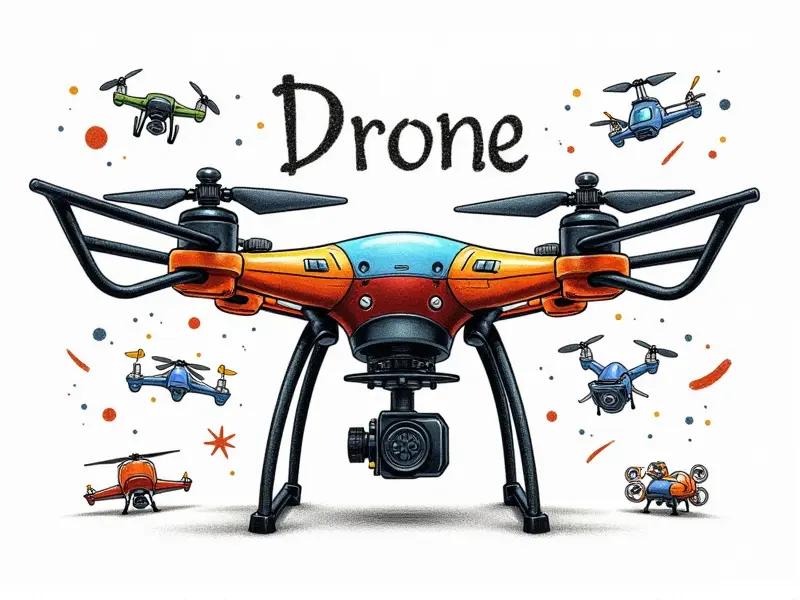How does a drone record video?

Drones have revolutionized the way we capture aerial footage, offering unparalleled perspectives and cinematic quality. Whether you're an amateur filmmaker or a professional videographer, understanding how to record high-quality video with your drone is essential. This article delves into the intricacies of drone videography, providing insights on achieving professional-quality videos, enhancing camera controls, and mastering the art of drone cinematography.
Achieving Professional-Quality Drone Videos
Creating stunning aerial footage requires more than just flying a drone; it demands an understanding of how to optimize your equipment for the best results. Here are some key steps:
- Selecting the Right Camera: Choose a camera that suits your needs, whether you're looking for high resolution or advanced features like 4K video and RAW photo capabilities.
- Stabilization Techniques: Utilize gimbal systems to stabilize your drone's footage, ensuring smooth shots even in windy conditions.
- Lens Selection: Opt for lenses that complement the type of content you're shooting. Wide-angle lenses are great for landscapes, while telephoto lenses offer more detail and compression.
Best Practices for Drone Videography
To capture professional-grade drone footage, adhere to these best practices:
- Flight Planning: Plan your flight paths in advance using software like Google Earth or DJI GS Pro. This helps you visualize the shot and avoid obstacles.
- Lights and Shadows: Pay attention to lighting conditions, as they significantly impact the mood and quality of your footage.
- Composition Techniques: Apply principles such as the rule of thirds, leading lines, and framing to create visually appealing shots.
Enhancing Your Drone's Video Quality
To elevate your drone video quality, consider these tips:
- Resolution Settings: Adjust resolution settings based on the intended use of your footage. Higher resolutions offer better detail but may increase file size.
- Frame Rates: Experiment with different frame rates to achieve the desired motion blur and smoothness in your videos.
- Color Profiles: Use color profiles that match the mood of your footage. For instance, a cool blue profile might suit a serene landscape shot.
Secrets of Drone Cinematography
Mastery over drone cinematography involves understanding these secrets:
- Dynamic Shots: Incorporate dynamic shots like pans, tilts, and zooms to add variety and interest to your footage.
- Telling a Story: Use your drone's unique perspective to tell compelling stories that engage viewers.
- Post-Processing: Enhance your footage with post-processing techniques like color grading, noise reduction, and stabilization.
Mastering Drone Camera Controls
To get the most out of your drone's camera system, master these controls:
- ISO Settings: Adjust ISO to balance between light sensitivity and image quality. Higher ISOs are useful in low-light conditions but may introduce noise.
- Aperture Control: Use aperture settings to control depth of field, allowing you to blur backgrounds or keep everything sharp as needed.
- Shutter Speed: Adjust shutter speed to achieve the desired motion effect. Faster speeds freeze action, while slower speeds create motion blur.
Understanding Drone Camera Systems
A deep understanding of your drone's camera system is crucial for optimal performance:
- Sensor Size: Larger sensors capture more light and detail, resulting in higher image quality.
- Lens Compatibility: Ensure that the lenses you use are compatible with your drone’s camera mount to avoid vignetting or other issues.
- Data Transmission: Opt for drones with reliable data transmission systems to ensure smooth video streaming and recording.
Top Tips for Filming with Drones
Here are some top tips to enhance your drone filming experience:
- Battery Management: Keep spare batteries handy, as drones have limited flight times. Efficient battery management ensures you can capture all the shots you need.
- Weather Conditions: Be mindful of weather conditions that could affect your drone's performance or safety.
- Legal and Ethical Considerations: Always adhere to local regulations regarding drone usage, privacy laws, and environmental protection.
The Art of Drone Cinematography
Droning cinematography is an art form that combines technical skill with creative vision. Here are some artistic elements to consider:
- Angles and Perspectives: Experiment with different angles and perspectives to create unique and engaging shots.
- Motion Control: Utilize motion control systems for precise, repeatable movements that add a professional touch to your footage.
- Synchronization: Synchronize drone movements with other elements in the scene, such as actors or moving vehicles, to create cohesive and dynamic shots.
Tips for Shooting with FPV Drones
First-person view (FPV) drones offer a thrilling way to capture action-packed footage. Here are some tips:
- Helmet Cameras: Use helmet-mounted cameras to record your FPV experience from the pilot's perspective.
- Practice and Precision: Regular practice is key to mastering FPV flying, ensuring smooth and controlled movements during filming.
- Safety First: Always prioritize safety when operating FPV drones. Use proper equipment like goggles and follow safe flight practices.
Drone Cameras: What You Need to Know
To make informed decisions about your drone camera setup, consider these factors:
- Resolution Capabilities: Understand the resolution capabilities of different cameras and choose one that meets your needs.
- Battery Life: Opt for drones with longer battery life to maximize filming time without interruptions.
- Compatibility: Ensure compatibility between your drone, camera, and accessories to avoid technical issues during filming.
Best Practices for Drone Video Quality
To ensure the highest video quality from your drone, follow these best practices:
- Lighting Conditions: Optimize lighting conditions by shooting at golden hour or using artificial light sources.
- Stability and Smoothness: Use stabilization techniques to achieve smooth footage even in challenging environments.
- Post-Processing Workflow: Develop a consistent post-processing workflow that enhances the visual appeal of your footage without compromising quality.
In conclusion, mastering drone cinematography requires a blend of technical knowledge and creative vision. By understanding your equipment, adhering to best practices, and embracing artistic techniques, you can capture stunning aerial footage that captivates audiences and elevates your projects to new heights.

